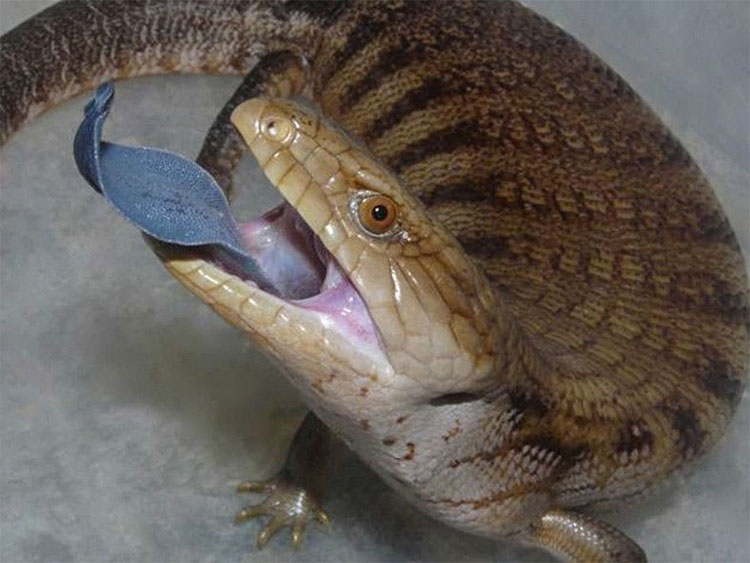Tongue animals reflect ultraviolet rays threatening enemies
When attacked, the lizard-colored lizard tongue reflects the ultraviolet rays that terrify the enemy for a chance to escape.

Northern green tongue lizard used in research.(Photo: Peter Street).
The research team at Macquarie University, Australia, discovered the back tongue of northern green tongue lizards reflecting ultraviolet rays more intense than the front, the Mother Nature Network reported on June 8. The back blade is usually hidden and only revealed at the last minute of the attack. This terrified the bird or snake, the enemy of the green tongue lizard, because they could see the ultraviolet rays.
Northern green tongue lizard (Tiliqua scincoides intermedia) lives in Northern Australia, the largest of the green tongue lizard family. They possess great camouflage ability thanks to the brown strips on their backs. However, they are still the hunting target of snakes, birds and varanels.
The team found that the tongue of the lizard ball glowed almost twice as much as the tip of the tongue. They wait until the predator attacks at the end to reveal the entire tongue.
"The timing of tongue sticking is very important," the study's lead author, Arnaud Badiane, said in a report published in Behavioral Ecology and Sociobiology. "If done too early, sticking out your tongue will ruin the lizard's disguise and attract unwanted attention from predators, increasing the risk of attack. If done too late, it may not prevent predators ".
- Use ultraviolet rays to avoid enemies
- Birds are abandoned when beauty fades
- 5 ultraviolet environments much less expected
- How to deal ultraviolet rays in the hot season
- Things to know about ultraviolet (UV)
- Ultraviolet light from the sun causes DNA damage
- Ultraviolet warning bracelet
- Why should I wear sunglasses
- NASA prepares to launch satellite observing the sun
- What really happened when we were sunburned?
- UV rays kill cancer cells in mice
- The doctor showed how to protect the hot sun's eyes
 Animal 'suffering' after hibernation
Animal 'suffering' after hibernation Why do goats climb well?
Why do goats climb well? Scientists were surprised to see chimpanzees eating turtles
Scientists were surprised to see chimpanzees eating turtles Giant catfish died deadly due to drought in Thailand
Giant catfish died deadly due to drought in Thailand